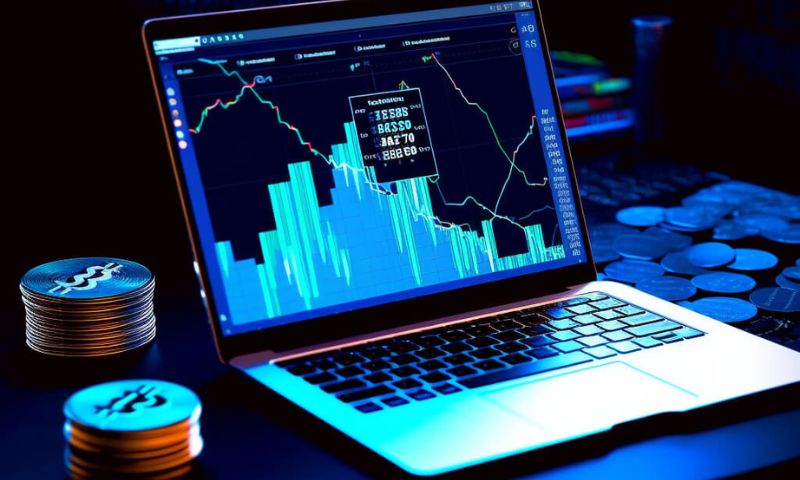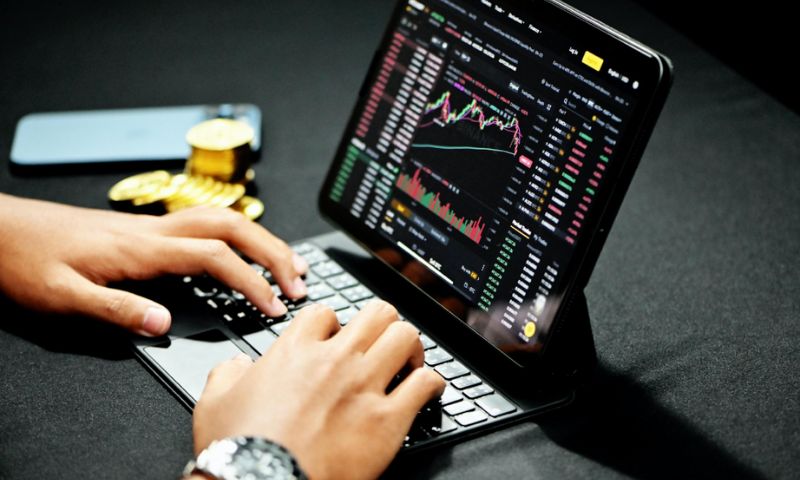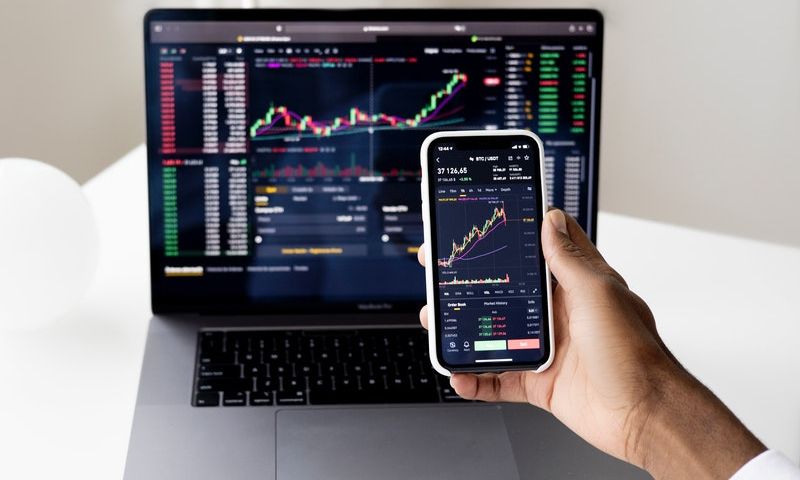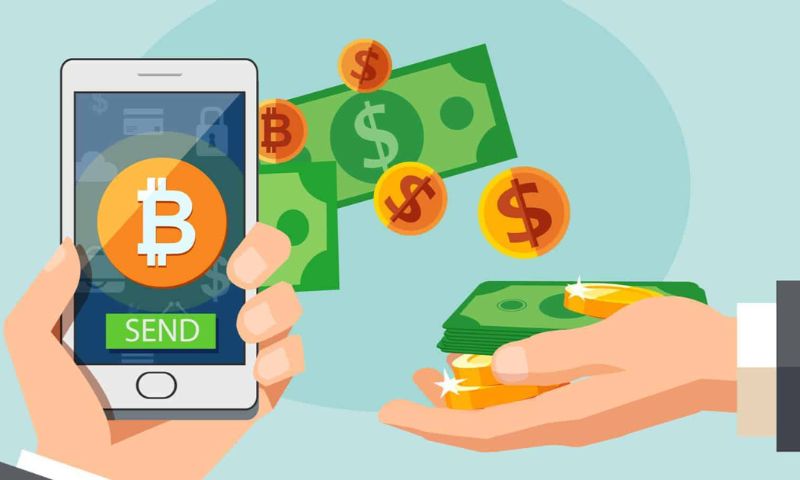Are you ready to dive into the world of leverage but feeling lost in the sea of fees for margin trading on crypto exchanges? Let me guide you! With the right know-how, you can crack this code, and it’s crucial to master it if you want to win big in crypto. It’s not just about borrowing to boost your buying power; it’s about smart strategies that consider every cost. Keep reading as I break down the essentials and show you how to tackle fees like a pro. Don’t let fees eat your profits—let’s unlock the fee puzzle together!
Understanding the Basics of Crypto Margin Trading Fees
The Components of Margin Trading Costs
When you dive into margin trading, you face various costs. These fees can make or break your wallet. Let’s break it down. First, there are the interest rates. This is what you pay for borrowing coins. Next up, we have commission rates. Every time you open or close a trade, the exchange takes a cut.
But wait, there’s more. We also encounter something called margin call charges. These hit you if your account falls below a certain amount. Last but not least, we deal with account maintenance fees. These are like a gym membership, where you pay to keep your account fit and ready.
Let’s peel back another layer. Some costs are clear, like the ones I just mentioned. Others hide under the surface. These hidden fees can creep up, chipping away at your profits.
Calculating Borrowing Costs in Crypto
Calculating borrowing costs is no child’s play. But let’s simplify. Imagine you borrow money to buy a car. You pay interest, right? It’s the same with crypto margin trading. You borrow coins and pay interest for the ride.
Interest rates change all the time. They can go up or down, just like the waves in the ocean. They depend on the exchange and the market demand. If a lot of traders want to borrow, rates may shoot up.
Still with me? Good. Now, this interest can either be a fixed rate or it might change. Both have their ups and downs. Fixed means no surprises, but it could be higher than the changing rate. Variable rates can dip low, saving you money. But they can also sky-rocket, and that’s no fun.
Let’s tackle another question. “What’s the impact on your pocket?” Picture two traders. One ignores these fees, while the other watches them like a hawk. The careful trader uses the fees to plan better, maybe even grabs discounts or joins a pool to lower costs.
Remember, every penny in fees is a penny less in profit. So, understanding and calculating borrowing costs before jumping in is crucial. It sets apart the rookies from the pros.
In conclusion, fees shape your margin trading journey. They seem small, but they add up fast. Wise traders keep an eye on costs to make smart moves. They know the rules of the game and play it better. And now, so do you.
The Impact of Variable and Fixed Fees on Crypto Leverage Strategies
Analyzing Variable Fees in Crypto Trading
Imagine you plan to buy a token with money you don’t have right now. You decide to borrow it, agreeing you’ll pay for using that money. That’s margin trading. You’re using borrowed funds to make bigger trades. So, if things go right, you earn more. But remember, bigger the trade, bigger the risk!
Variable fees in crypto trading can surprise you. They change, based on things like how much you borrow and market conditions. Think of these like a ride fare that goes up in rush hour. Fees grow when many traders want to borrow. So, when demand for leverage is high, your trading costs shoot up too.
Calculating these costs means looking at the margin funding rates. They tell how much you’ll pay for borrowing. These rates can go up or down, just like interest does. It’s like a loan that can get cheaper or pricier each day. Tricky, right?
Remember, you also pay a fee when you open and exit trades. So, picture a door that costs money to open and close. If you’re trading a lot, these costs add up. Think very hard before jumping into lots of trades in one day!
The Role of Fixed Margin Fees in Cost Management
Now, fixed margin fees are easier to get. They don’t change as often. It’s a set rate, like a sticker price. You know what you’ll pay when you borrow, no surprises. These fees help you plan your trading costs better.
But, just like with anything fixed, you can find yourself paying more than you need to when rates go down. It’s like buying a train ticket at a fixed price, only to find out later there was a cheaper deal. That’s a bummer.
Some exchanges charge fixed fees for maintaining your margin account. Think of it like a membership fee to a special trading club. If you only trade sometimes, this fee can eat into your profits. It’s like paying for a gym membership even when you don’t go.
Lastly, what if you can’t pay back what you borrowed? You may face margin call charges. This is when the exchange asks you for more money to cover your loan. Think of this like getting a call from a friend you owe money to, asking you to pay up now!
In the end, to keep your crypto leverage quality, you need to manage these fees well. Always do your math for both variable and fixed fees. This helps you trade smart and keep more of what you earn.
So when you step into margin trading, think of these costs like backpacking gear. Get the high-quality stuff, so you don’t get stuck in the rain without a tent. Solid fee management is your best gear in the wild market weather!
Navigating Through Margin Calls and Interest Rates
Strategies to Handle Margin Call Charges in Cryptocurrency
When trading on margin, a margin call is not your best friend. This is when your broker says you need to pay more money, or they’ll close your trade at a loss. No one wants that. When you get a margin call, act fast. Pay the cash, or sell some assets fast. Selling fast stops bigger losses. Use stop-loss orders. These orders sell your assets before you hit the margin call level. Keep cash in your account. More cash means less chance of a margin call. Watch your account. Check it a lot so you don’t miss margin calls.
Choose exchanges with lower margin call fees. Each exchange has different rates. Shop around. If you do get a margin call, don’t panic. Remember these steps to handle it right. Try to keep more money in your account to avoid this.
Average Margin Interest Rates and Their Influence
Interest can eat profits. Margin trading in crypto is borrowing money to trade more than you own. You pay interest on this borrowed cash. It’s like a loan for your trade. A small rate can still take a big bite of your wins if not careful. Rates change a lot. They go up and down with the market. So, they’re not always the same.
Track the rates. Different platforms may have different rates. Look for lower ones. Be quick to pay back. The faster you pay off the borrowed money, the less interest you pay. Use leverage wisely. It’s tempting to go big, but it can backfire. More leverage means more borrowed money. More borrowed money means more interest fees.
Low rates help. They can make margin trade more manageable. But even with low rates, you must trade smart. And always be ready for rate changes. They can change your trade plan fast.
In summary, watch for margin calls and manage them with care to protect your trading capital. Keep an eye on interest rates; they’ll affect how much you pay when you trade with borrowed funds. Remember, lower rates can be your ally, but they’re not the only thing to consider when trading on margin. Shop around, act quickly, and above all, be informed. That’s your best defense against margin call charges and rising interest fees.
Optimizing Trading Profits Amidst Complex Fee Structures
Seeking Cost-Efficiency: Comparison of Crypto Margin Platforms
Margin trading lets you borrow money for big trades with a small start. But, just starting isn’t enough; you need to know the cost too. Each crypto platform has its own margin trading cost comparison. Think like shopping for the best deal. You have to compare fees across cryptocurrency exchange margins. Ask how much they charge for lending you coins for a trade.
The best way to do this? Look at their fee schedules. Some have high costs upfront, known as fixed margin fees. Others have variable fees based on how much you trade. Crypto leverage expenses can eat into profits if not checked. You need to know what you’re paying for. That’s why comparing the fee structure is vital.
Where can you find this info? On the exchange’s website, there’s often a fee schedule. Use it to estimate your costs. It’s also smart to see what others say. Read reviews or talk in forums. This can give you real-world insights into the costs.
Hidden Fees in Crypto Margin Trading and How to Avoid Them
Hidden fees are like puzzle pieces. If you don’t fit them together, your image of costs won’t be clear. What kind of sneaky costs are there? Things like margin account maintenance fees or the price to open a trade. When you’re in a hurry, it’s easy to miss these.
Interest rates on what you borrow can change. This is true for margin funding rates in cryptocurrency too. Interest can add up each day. The rate can jump if you hold onto your trade for a while.
Margin call charges are another hidden trap. If a trade goes bad, you have to pay up or close it. This can cost a lot if not prepared. To stay ahead, always watch your trades. This way you won’t be caught off guard by a margin call.
Short selling is another way to trade. It means betting the price will drop. But this can also come with fees. Often exchanges charge more for this risky move.
And remember, borrowing costs money. When you take from a margin funding liquidity pool, there’s a price. You can avoid surprises by doing the homework. Always calculate borrowing costs in crypto before you leap into a trade.
Make it a rule to review fees before each trade. That way, you avoid those pesky hidden charges. Compare platform fees. Check for updates on costs. And if in doubt, ask! Communities, chat supports, and forums are there to help.
Managing fees is like keeping a boat afloat. If you plug the leaks, your journey to profit stays on course. Remember: trading is not just about making money. It’s also about holding onto it by dodging needless expenses. Be smart, stay informed, and keep your earnings in your pocket where they belong.
In this post, we dived deep into the costs that come with crypto margin trading. We started by breaking down the basic fees you face when trading on margin. Then, we looked at how both variable and fixed fees can shape your leverage tactics. We also touched on how to deal with margin calls and their related charges, as well as the effect of average interest rates.
I’ve also shared strategies on how to keep more money in your pocket by choosing the right platform and steering clear of hidden fees. Remember, smart trading is not just about bold moves but also about understanding and managing these costs. Keep this guide in mind to help you make better, more informed decisions in the fast-paced world of crypto margin trading. Stay sharp, and trade smart!
Q&A :
What are the typical fees associated with margin trading on cryptocurrency exchanges?
Margin trading on cryptocurrency exchanges usually involves certain fees which can vary widely among different platforms. Typically, these fees include interest charges on the borrowed funds, which accrue either hourly or daily. Additionally, exchanges may charge a flat fee for opening a margin position or a percentage of the trade volume. It’s important to read the exchange’s fee schedule carefully to understand all the potential costs involved.
How do fees for margin trading compare between different crypto exchanges?
Fees for margin trading can differ significantly between various crypto exchanges, as each platform has its own fee structure and pricing strategy. Some may offer lower interest rates but higher transaction fees, while others may entice users with zero opening fees but carry higher maintenance costs. Savvy traders often compare exchanges not only for fee structures but also for other features like liquidity, security, and the range of available trading pairs.
Can the fees for margin trading affect my profitability?
Yes, the fees for margin trading can have a substantial impact on your profitability. High borrowing costs can eat into your trading profits, especially if you hold positions open for an extended period. It’s crucial for traders to calculate the potential costs of fees against their expected returns before engaging in margin trading and to incorporate these costs into their trading strategy.
Are there hidden fees in margin trading on crypto exchanges I should be aware of?
While reputable crypto exchanges usually disclose all margin trading fees upfront, it’s essential to be vigilant for potential hidden costs. These could include withdrawal fees, liquidation penalties, or fees associated with holding positions overnight or over the weekend. To avoid surprises, review the exchange’s detailed fee policy and terms of service, and don’t hesitate to reach out to their customer support for clarifications.
What strategies can I employ to minimize fees when margin trading cryptocurrencies?
To minimize fees when margin trading cryptocurrencies, consider the following strategies:
- **Shop Around:**Compare the fee structures of different exchanges to find the most competitive rates.
- **Monitor Timing:**Take advantage of lower fees during off-peak hours if offered by the exchange.
- **Short-Term Trades:**Consider shorter-term trades to reduce interest charges accrued over time.
- **Fee Reduction Programs:**Some exchanges offer reduced fees for their high-volume traders or those holding the exchange’s native cryptocurrency.
- **Risk Management:**Use stop-loss orders and other risk management techniques to prevent liquidation, which can come with hefty penalties.






